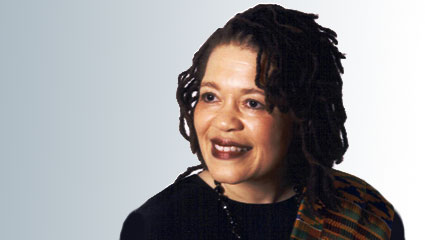So often our parishioners forget that the texts of the Bible were written to and about real people whose circumstances were surprisingly similar to ours
Their transformation, in the face of similar difficulties, signals hope for us. The Apostle Paul says it better:
“For whatever was written in former days was written for our instruction, so that by steadfastness and by the encouragement of the scriptures we might have hope.” (Romans 15:4, NRSV)
Many of the speakers at the most recent Festival of Homiletics humanized their texts by giving us tangible ways to connect with their respective Bible characters.
I now think of Mary Magdalene differently as a direct result of experiencing Bishop Michael Curry’s intriguing snapshot of Mary’s defiant stance with Jesus’ family members at the foot of the cross and later alone at the tomb. Curry reminded us that Mary was certainly aware that just the act of being present at either location could place her under dangerous scrutiny because the Crucifixion was both a religious and a political execution.
Anna Carter Florence painted pictures that helped us understand the pitfalls of Judah’s dysfunctional family tree. At the end of her presentation we marveled together at the amazing love that God continues to have for our tragically marred humanity.
Raphael Warnock reminded us of our own vulnerability as we looked at the very human side of Jesus through the lens of the Lenten temptation texts. Walter Brueggemann used narrative to unpack an oft-overlooked Old Testament portion from the Elisha stories.
The Festival reminded me that one important way pastors are able to help texts live and grow inside their parishioners’ hearts is to help them see the humanity of the people we often canonize in our telling of the text.
So, how does the preacher humanize the text? One way that I have found helpful is a modified form of lectio divina that I think of as holy imagination. The goal of this method of study is to shift the way that we hear and experience the text from our 21st-century context to that of unfamiliar times.
To begin, simply read the text, or listen to a recording of the text. (The recording may be of your own voice or you may choose a dramatized text.) As you read or listen to the text, engage it subjectively. We are generally taught to objectify things that we study — whether they be places, objects, people or Bible texts. We hold them at arm’s length and analyze them as a lepidopterist studies a butterfly. From this, we often construct interesting sermons. But congregations are also looking for sermons that collide with their lived experiences. So, embrace the text subjectively.
How does the subject matter make you feel? What is going on inside of you as you read or hear these words? An important question after this first reading: with whom do you identify as you experience the text?
Now, pause and think about what you have just experienced. Stop and jot down unedited notes. Resist the temptation to theologize, to sanitize or to otherwise edit away the still small voice. If you find yourself outraged that a 12-year-old misplaced Jesus did not take the concerns of his worried parents seriously, then write just that! Attempt to experience the emotions and the cultural taboos of the incident as Jesus’ parents might have experienced them.
On second and subsequent hearings/readings of the text dig deeper. You may find it helpful to read several different Bible translations. Ask yourself probing questions as you attempt to experience the text mindful of the cultural, social and political limitations that the people of the times experienced when facing their challenges. For example, Mary’s pregnancy could have led to more than embarrassment or inconvenience; it could have led to stoning! Sarah’s barrenness was more than infertility; her neighbors saw it as a sign of God’s disfavor. The stories of the many barren women we encounter are loaded with cultural, social and religious baggage. How did those people feel, how were they treated, and how great the impact of the miracle of conception for them?
We have read and preached some texts so often that we all know the punch-line and risk missing the leap of faith required for someone like Abraham to pack up and go … “Well I don’t quite know where I am going!” We may be getting to the moral of the story too quickly. Perhaps our greatest challenge lies in finding ways to help members of our twenty-first century congregations enter the text.
Maybe we need to raise questions that are not easily answered about Jesus’ unexpected excursion to the Temple or Mary’s unvoiced fears over an uncertain future as a not-quite-wed pregnant teenager. Remind worshippers that David’s sin with Bathsheba, though tabloid material in any era, had religious as well as civic implications. Compare the repentance of Psalm 51 with the staged repentance of political leaders on the 6 o’clock news.
Last of all; consult your favorite commentaries and websites for the theological materials that you think might be needed to help your congregation move from uncertainty to faith as they live the word with the very human people we find in the Bible texts.

